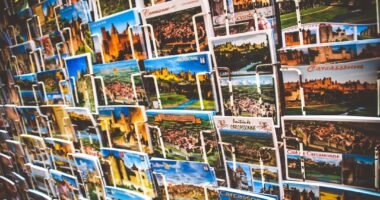The fashion industry is a multifaceted realm that encompasses a wide array of disciplines, from design and production to marketing and retail. At its core, fashion is not merely about clothing; it is a reflection of culture, identity, and societal trends. The industry operates on a cyclical basis, with seasons dictating the flow of collections and consumer demand.
Designers, brands, and retailers must stay attuned to the ever-changing landscape of consumer preferences, which can be influenced by various factors such as social media, celebrity endorsements, and global events. Understanding these dynamics is crucial for anyone aspiring to make their mark in the fashion world, as it allows them to anticipate trends and respond effectively to market demands. Moreover, the fashion industry is characterized by its competitive nature.
With countless designers vying for attention and a limited number of opportunities, standing out becomes imperative. This competition drives innovation and creativity, pushing artists to explore new ideas and techniques. However, it also necessitates a deep understanding of the business side of fashion.
Aspiring fashion illustrators must familiarize themselves with the intricacies of branding, marketing strategies, and consumer behavior. By grasping these elements, they can position themselves more effectively within the industry and create work that resonates with both clients and audiences alike.
Key Takeaways
- The fashion industry is dynamic and constantly evolving, requiring a deep understanding of trends and consumer preferences.
- Developing artistic skills such as drawing, sketching, and color theory is essential for success as a fashion illustrator.
- Building a strong portfolio showcasing a variety of styles and techniques is crucial for attracting potential clients and employers.
- Networking and collaborating with other industry professionals can open up new opportunities and help you gain exposure.
- Finding your unique style as a fashion illustrator will set you apart from the competition and make your work memorable to clients and audiences.
Developing Your Artistic Skills
Developing the Skills of a Fashion Illustrator
To succeed as a fashion illustrator, one must possess a diverse set of artistic skills that extend beyond basic drawing abilities. While technical proficiency in illustration is crucial, it is equally important to develop a keen eye for detail and an understanding of human anatomy. Fashion illustration often requires the ability to depict garments in a way that highlights their structure, movement, and texture.
Understanding Fabric and Artistic Mediums
This necessitates not only an understanding of fabric types and their properties but also the ability to convey these elements through various artistic mediums. Whether working with traditional tools like pencils and watercolors or digital platforms, mastering these techniques can significantly enhance an illustrator’s ability to bring their visions to life.
Cultivating Creativity and Style
In addition to technical skills, aspiring illustrators should also focus on expanding their creative repertoire. This can involve experimenting with different styles, exploring various artistic influences, and pushing the boundaries of conventional illustration. Engaging in regular practice is vital; sketching daily can help refine one’s skills and foster a unique artistic voice. Furthermore, seeking feedback from peers or mentors can provide valuable insights into areas for improvement.
Embracing Continuous Learning and Exploration
By embracing a mindset of continuous learning and exploration, fashion illustrators can develop a distinctive style that sets them apart in a crowded marketplace.
Building Your Portfolio

A well-curated portfolio serves as a visual resume for fashion illustrators, showcasing their skills, creativity, and versatility. It is often the first point of contact between an illustrator and potential clients or employers, making it essential to present work that is not only technically proficient but also reflective of one’s unique artistic voice. When building a portfolio, it is crucial to include a diverse range of pieces that demonstrate different styles, techniques, and subject matter.
This variety not only highlights an illustrator’s adaptability but also allows them to appeal to a broader audience within the fashion industry. In addition to showcasing finished illustrations, a strong portfolio should also include sketches and concept work that illustrate the creative process behind each piece. This transparency can provide insight into an illustrator’s thought process and problem-solving abilities, which are highly valued in the industry.
Furthermore, presenting work in a cohesive manner—whether through consistent formatting or thematic organization—can enhance the overall impact of the portfolio. As fashion trends evolve, it is important for illustrators to regularly update their portfolios to reflect their latest work and growth as artists. By doing so, they can ensure that they remain relevant in an ever-changing industry landscape.
Networking and Collaboration
Networking is an indispensable aspect of building a successful career in fashion illustration. The industry thrives on relationships; connections can lead to collaborations, job opportunities, and valuable mentorships. Attending industry events such as fashion shows, art exhibitions, or trade fairs can provide aspiring illustrators with opportunities to meet established professionals and fellow creatives.
Engaging in conversations about shared interests can help forge meaningful connections that may lead to future collaborations or job offers. Additionally, leveraging social media platforms like Instagram or LinkedIn can expand an illustrator’s reach beyond their immediate geographic area, allowing them to connect with a global audience. Collaboration is another powerful tool for growth within the fashion industry.
Working alongside other creatives—be it designers, photographers, or stylists—can lead to innovative projects that push artistic boundaries. Collaborative efforts often result in unique outcomes that may not have been possible when working in isolation. Moreover, these partnerships can provide valuable learning experiences; by observing how others approach their craft, illustrators can gain new perspectives and techniques that enrich their own work.
Ultimately, fostering a network of supportive relationships within the industry can create a sense of community that encourages growth and creativity.
Finding Your Unique Style
In a saturated market where countless artists vie for attention, developing a unique style is paramount for any fashion illustrator. A distinctive artistic voice not only sets an illustrator apart but also helps them establish a recognizable brand identity. To cultivate this uniqueness, it is essential for illustrators to explore various influences—be it art movements, cultural references, or personal experiences—that resonate with them on a deeper level.
By synthesizing these elements into their work, they can create illustrations that are not only visually appealing but also imbued with personal significance. Finding one’s unique style often involves experimentation and risk-taking. Illustrators should feel empowered to step outside their comfort zones and try new techniques or subject matter that may initially feel foreign.
This process of exploration can lead to unexpected discoveries that ultimately shape an artist’s signature style. Additionally, reflecting on past work can provide insights into recurring themes or techniques that resonate most strongly with an illustrator’s vision. By embracing both the journey of self-discovery and the willingness to evolve over time, fashion illustrators can carve out a niche that reflects their individuality while appealing to the broader fashion community.
Marketing Yourself as a Fashion Illustrator

Establishing a Strong Online Presence
In today’s digital age, effective self-marketing is crucial for fashion illustrators seeking to establish their presence in the industry. A strong online presence can significantly enhance visibility and attract potential clients or collaborators. Creating a professional website that showcases an illustrator’s portfolio is an essential first step; this platform serves as a central hub where visitors can view work samples, read about the artist’s background, and contact them for inquiries.
Engaging with the Audience through Social Media
Additionally, maintaining active social media profiles allows illustrators to engage with their audience directly while sharing insights into their creative process and daily life as an artist. Beyond social media engagement, illustrators should consider leveraging content marketing strategies to further promote their work. Blogging about topics related to fashion illustration—such as techniques used in specific projects or reflections on industry trends—can position them as knowledgeable voices within the field.
Expanding Reach through Collaborations and Content Marketing
Collaborating with fashion bloggers or influencers can also amplify reach; by partnering with individuals who have established followings, illustrators can tap into new audiences who may be interested in their work. This strategic approach enables fashion illustrators to expand their network and gain exposure to potential clients.
Building a Strong Personal Brand
Ultimately, effective marketing requires consistency and authenticity; by staying true to their artistic vision while actively promoting themselves across various platforms, fashion illustrators can build a strong personal brand that resonates with clients and fans alike.
Continuing Education and Growth
The journey of a fashion illustrator does not end with the establishment of a portfolio or network; rather, it is an ongoing process of learning and growth. The fashion industry is constantly evolving—new trends emerge regularly, technologies advance rapidly, and consumer preferences shift frequently. To remain relevant in this dynamic environment, illustrators must commit themselves to continuous education.
This could involve attending workshops or courses focused on specific techniques or software programs that enhance their skill set. Additionally, seeking out mentorship opportunities with established professionals can provide invaluable insights into navigating the complexities of the industry. Moreover, personal growth as an artist often stems from engaging with diverse experiences outside of one’s immediate field.
Traveling to new places can inspire fresh ideas; immersing oneself in different cultures may lead to innovative approaches in illustration that reflect varied aesthetics or narratives. Reading widely—whether literature on art history or contemporary design—can also broaden an illustrator’s perspective and inform their work in unexpected ways. By embracing lifelong learning and remaining open to new experiences, fashion illustrators can continue to evolve both personally and professionally while contributing meaningfully to the vibrant tapestry of the fashion industry.
FAQs
What is fashion illustration?
Fashion illustration is the art of depicting clothing, accessories, and other fashion items in a visually appealing and creative way. It is often used in the fashion industry for advertising, design, and editorial purposes.
What are the key steps for aspiring artists to start as a fashion illustrator?
Some key steps for aspiring artists to start as a fashion illustrator include developing strong drawing skills, studying fashion trends and designers, building a portfolio, networking with industry professionals, and seeking formal education or training in fashion illustration.
What drawing skills are important for fashion illustration?
Important drawing skills for fashion illustration include the ability to accurately depict human figures, understand proportions, and convey fabric textures and drapery. Additionally, having a strong sense of composition, color theory, and attention to detail is crucial for creating compelling fashion illustrations.
How can aspiring fashion illustrators build a portfolio?
Aspiring fashion illustrators can build a portfolio by creating a diverse range of fashion illustrations that showcase their skills and style. This can include drawing from live models, creating illustrations based on fashion photography, and experimenting with different mediums and techniques. It’s also important to curate a cohesive and professional portfolio that highlights the artist’s best work.
What are some ways to network with industry professionals in fashion illustration?
Networking with industry professionals in fashion illustration can be done through attending fashion events, art exhibitions, and industry conferences. Additionally, utilizing social media platforms such as Instagram and LinkedIn to connect with fashion designers, art directors, and other illustrators can also be beneficial for building professional relationships.
Is formal education or training necessary for becoming a fashion illustrator?
While formal education or training is not always necessary for becoming a fashion illustrator, it can provide valuable skills, knowledge, and networking opportunities. Many aspiring fashion illustrators pursue degrees in fashion design, illustration, or fine arts, or attend specialized art schools or workshops to develop their skills and gain industry insights.





